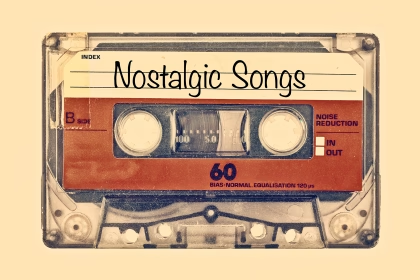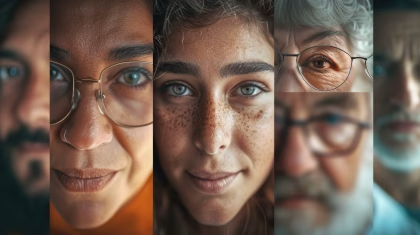Bias isn’t a flaw, it’s a feature. Biases are the brain’s shortcuts for surviving an overwhelming world. This guide explores why cognitive biases evolved, how they shape perception, memory, and decision-making, and why understanding them is essential for improving judgment, communication, and behavior in modern life.
Table of Contents
Introduction – Why the Brain Needs Bias
Bias is often viewed negatively, and often with good reason. In everyday language, it’s associated with racism, prejudice, discrimination, and other deeply harmful social outcomes.
These forms of bias deserve serious attention and ethical concern. However, it’s important to understand that bias itself is not inherently malicious or avoidable. In fact, bias is a fundamental feature of how the human brain processes information. Without it, we could not function in any meaningful way as people.
The human brain is constantly bombarded with sensory data, such as light hitting the retina, vibrations in the cochlea, smells, tactile sensations, proprioceptive signals, and countless internal inputs.
Estimates suggest that we encounter over 11 million bits of information per second, yet our conscious awareness can handle fewer than 50 bits at any given moment. This vast mismatch between input and processing capacity presents a core challenge: how can we make sense of a complex world with such limited cognitive bandwidth?
The brain’s solution is to use heuristics, mental shortcuts that enable fast, efficient decision-making. These heuristics are not flaws; they are essential adaptations that evolved to help us survive in uncertain and information-rich environments. However, they come at a cost: heuristics can give rise to cognitive biases. systematic distortions in perception, memory, and judgment.

Cognitive Efficiency, A Design Imperative
From an evolutionary perspective, speed almost always trumps precision. In the dangerous, resource-scarce environment of our ancestors, decisions often needed to be made in milliseconds. A brain that stopped to weigh all possible variables before acting would often not survive long enough to reproduce.
Thus, bias is, in the immortal words of software developers everywhere, not a flaw, it’s a feature. It reflects the brain’s need to prioritize efficiency over exhaustiveness, enabling us to make “good enough” decisions under conditions of uncertainty and time pressure.
Let’s explore a few of the most studied and evolutionarily adaptive biases:
1. Negativity Bias – The Brain’s Threat Detection System
One of the most robust findings in cognitive neuroscience is that the brain responds more strongly to negative stimuli than to equally intense positive ones. From an evolutionary standpoint, this makes sense: failing to notice a potential threat (e.g., a snake in the grass) has much more immediate consequences than missing a potential reward (e.g., a ripe fruit).
- This bias is rooted in the amygdala, the brain’s central hub for threat detection. Neuroimaging studies show that the amygdala activates more strongly and more quickly in response to negative facial expressions, dangerous scenarios, and aversive cues.
- The negativity bias ensures that potential threats are prioritized in attention, memory encoding, and decision-making, even if they are rare or ambiguous. It’s why we fixate on criticism more than praise, and why bad news often feels more “real” or urgent than good news.
In modern contexts, this bias can distort our perception of risk, contribute to anxiety, and drive sensationalist media consumption.
2. In-Group Bias: Social Safety Mechanisms
Humans evolved as ultra-social animals, and our survival depended largely on tight-knit group cooperation, which provided protection, shared resources, and cumulative knowledge.
Over time, the human brain evolved cognitive mechanisms that favored cooperation and trust with those perceived as part of one’s social group, which was often signaled by shared language, norms, and familiar behaviors. While these tendencies once supported survival in small communities, they can manifest today as implicit in-group bias, even without conscious intent.
- This bias is supported by the medial prefrontal cortex, which is more active when we think about people who are similar to us. Oxytocin, a hormone linked to bonding, has also been shown to enhance trust and empathy, but selectively toward in-group members.
- In-group bias promotes group cohesion, encourages reciprocal altruism, and reduces internal conflict. However, it can also lead to out-group derogation, stereotyping, and social division, even when group distinctions are arbitrary (as shown in Tajfel’s minimal group experiments).

While this bias once promoted tribal survival, it can now fuel polarization, prejudice, and discrimination in multicultural, interconnected societies.
3. Availability Bias: Learning from the Immediate Past
When asked to estimate how likely an event is, people tend to rely on how easily examples come to mind. This is the availability bias, and it arises from the brain’s reliance on salient, recent, or emotionally charged memories as proxies for statistical reality.
- From an adaptive standpoint, this bias helped organisms prioritize recent dangers. If a member of your group was just attacked by a predator at the watering hole, your brain doesn’t need to compute probabilities – it just needs to say, “Avoid that spot for a while.”
- The hippocampus and prefrontal cortex work together to retrieve recent episodic memories, while the emotional salience of those events (often encoded with help from the amygdala) gives them disproportionate weight in decision-making.
In the modern world, availability bias can lead us to overestimate the frequency of plane crashes, violent crimes, or natural disasters, especially when such events dominate the news cycle. It also influences consumer behavior, political attitudes, and personal risk assessments.
Biases Today: Outdated Yet Active
These biases, originally adaptive responses to ancestral environments, remain active even though modern contexts have shifted dramatically. While our physical safety is now more assured and our social environments more diverse, our brains still rely on heuristics tuned for quick decisions under threat and uncertainty.
This mismatch leads to what some psychologists call “evolutionary lag.” Our cognitive architecture hasn’t caught up to the complexity and abstraction of modern life, so we continue to make decisions using tools designed for survival on the savannah.
Understanding the why behind our biases allows us to:
- Design better user interfaces and choice architectures that accommodate or correct for these patterns.
- Improve communication strategies by leveraging (or mitigating) emotional salience and group identity.
- Enhance psychological interventions by targeting the root causes of irrational judgments, not just the symptoms.
Infographic: The Three Layers of Bias
Bias is not a single construct but an interaction of perceptual, cognitive, and emotional processes, that can be broken down like this:
| Layer | What It Influences | Examples |
| Perceptual Bias | What we notice first or ignore entirely | Attentional bias, gaze bias, salience effects |
| Cognitive Bias | How we interpret and evaluate information | Confirmation bias, framing effects, anchoring |
| Affective Bias | How emotions shape decisions and memory | Affect heuristic, loss aversion, optimism/pessimism bias |
These layers operate simultaneously, often milliseconds before conscious awareness.
Categories of Bias: A Scientific Map
Cognitive biases are not random errors, they are systematic patterns in how we perceive, remember, decide, and relate to others. To study them scientifically, researchers often organize these biases into functional categories based on which part of the cognitive process they affect.
Think of this as a map of the mind’s shortcuts, and a guide to where things tend to go “wrong” when the brain optimizes for speed and efficiency over precision and objectivity.
1. Attention and Perception Biases
Attention and Perception biases operate at the early stages of information processing, before conscious reflection even begins. They determine what stimuli are noticed, how long we attend to them, and what gets prioritized in the perceptual field.
Measurement Insight:
Biases in attention are often best detected using eye tracking, pupil dilation, or neuroimaging (e.g., EEG). These tools can reveal subtle shifts in attention before participants are even aware they’ve “noticed” something.
Examples:
- Attentional bias – Heightened attention toward certain stimulus types, often threat-related, facial expressions, or emotionally salient images. This is seen in anxiety, PTSD, and marketing studies, where participants lock on to negative or emotionally powerful cues.
- Gaze cascade effect – A pre-decisional phenomenon where people increasingly fixate on the item they will eventually choose, attention feeds preference, and preference feeds attention, in a feedback loop. This suggests that choice is constructed, not discovered.
- Salience bias – Visually or auditorily distinct items capture more attention, even if they’re irrelevant. Bright colors, movement, or novelty “hijack” perception. In UX and media design, this explains why bold calls-to-action or disruptive sounds grab disproportionate attention.
These biases reflect the brain’s prioritization system, which is often tuned for survival relevance rather than objective importance.
2. Memory-Related Biases
Memory is not a passive recording device. It is reconstructive, influenced by emotions, context, expectations, and hindsight. Memory biases affect what gets encoded, how it’s stored, and what we retrieve later.
Measurement Insight:
Biases in memory are studied using longitudinal recall tests, self-report comparisons, and neurological imaging to examine memory trace activation (e.g., hippocampus, prefrontal cortex).
Examples:
- False memory effect – People can confidently “remember” events that never occurred, often shaped by suggestion, leading questions, or repeated exposure to misinformation. This has massive implications for legal testimony and eyewitness accuracy.
- Peak-end rule – Memory of an experience is dominated not by the average of all moments, but by its most intense point and its end. This explains why a painful medical procedure that ends gently is remembered more positively than a shorter, more intense one.
- Hindsight and consistency bias – After an outcome is known, we tend to believe it was “obvious all along” (hindsight), or assume our current beliefs have always been consistent (consistency bias). These distortions hinder learning and feed overconfidence.
In decision-making and design research, memory biases explain why user feedback often fails to match actual experience – in that case it is important to remember that what people recall isn’t necessarily what they experienced.
3. Decision and Judgment Biases
These biases influence how we make choices, estimate probabilities, and interpret information. Often studied under behavioral economics, they reveal that humans are not the rational agents traditional economic models assumed.
Measurement Insight:
Analyzed through behavioral experiments, forced-choice tasks, and response-time data, often paired with GSR (galvanic skin response) or facial EMG to assess affective reactions.
Examples:
- Anchoring – When exposed to an initial number or option, all subsequent judgments are pulled toward that “anchor.” For instance, asking “Was Gandhi older than 140 when he died?” biases age estimates upward, even though it’s absurd.
- Framing effects – The way information is presented (gain vs. loss) drastically changes decision outcomes. People will prefer a treatment with a “90% survival rate” over one with a “10% mortality rate,” even though they’re identical.
- Sunk-cost fallacy – Continuing an endeavor based on previously invested resources, even when it’s no longer rational. Common in business, relationships, and even everyday purchases.
- Status quo bias – A preference for the current state of affairs, even when change would offer better outcomes. This underlies resistance to innovation and political inertia.
These biases reveal that decision-making is context-dependent, heavily influenced by how choices are framed, sequenced, or emotionally colored.
4. Social and Interpersonal Biases
Our social brain evolved to navigate complex group dynamics. As a result, many biases are oriented toward interpreting, evaluating, and reacting to other humans – especially under ambiguity.
Measurement Insight:
These are assessed via implicit association tests, social decision-making paradigms, and physiological synchrony (e.g., HRV coherence) in interpersonal contexts.
Examples:
- Halo effect – If someone is good in one domain (e.g., attractive, articulate), we tend to assume they are good in others (e.g., intelligent, kind). It’s a shortcut for social judgment, but most often inaccurate.
- Implicit bias – Unconscious attitudes or stereotypes that influence behavior without conscious intent, toward race, gender, age, etc. These can be revealed by reaction-time tasks or priming effects, not self-report.
- Authority bias – A tendency to trust or defer to perceived authority figures, even when their directives conflict with evidence or ethics (e.g., Milgram’s obedience study).
- In-group/out-group preference – As covered earlier, we favor those who share our identity markers. This affects empathy, trust, punishment, and cooperation.
These biases have major implications in hiring, healthcare, law enforcement, and education, where decisions about people must be as fair and objective as possible.
5. Emotional and Motivational Biases
These are rooted in subcortical structures like the amygdala, striatum, and dopaminergic pathways. They guide decisions based on emotional valence (good/bad) and motivational relevance (want/avoid), not logical analysis.
Measurement Insight:
Often studied using fMRI, GSR, facial coding, or reward-based behavioral tasks that reveal how expected versus actual outcomes affect mood and choice.
Examples:
- Loss aversion – Losses feel more painful than equivalent gains feel pleasurable. Losing $50 hurts more than winning $50 feels good. This underlies risk aversion and conservative financial behavior.
- Optimism bias – A tendency to believe that positive events are more likely to happen to us than to others. It buffers anxiety but can lead to underestimating risk.
- Reward prediction error bias – Dopamine neurons fire not just when rewards occur, but when they are better than expected. This can skew learning and cause over-valuation of unexpected gains.
These biases are not “irrational”, it is more that they are emotionally adaptive, helping organisms pursue goals, avoid threats, and remain resilient in uncertain environments.
Why Bias Cannot Be Self-Reported
Cognitive biases often operate at an unconscious level, rooted in what psychologist Daniel Kahneman termed System 1 processing. These processes are fast, automatic, and intuitive mental operations that occur without deliberate awareness. Because these processes are largely inaccessible to introspection, individuals are unable to accurately report the biases that shape their perceptions, decisions, or judgments.
When asked to explain their behavior, people most often tend to construct plausible narratives that feel true. These explanations are often coherent and socially acceptable, but they may not reflect the actual cognitive mechanisms at work. This phenomenon is known as confabulation: the brain fills in gaps with post hoc rationalizations, mistaking them for genuine insight.
As a result, relying solely on self-report methods, such as surveys or interviews, provides an incomplete and potentially misleading picture of human behavior. The divergence between reported attitudes and actual behavior is well-documented across fields like consumer research, UX testing, and social psychology.
So, what do you do, when you cannot rely solely on self-reporting? You go multimodal. These measurements become essential when unearthing the objective truth of human behavior. By combining tools such as eye tracking, galvanic skin response (GSR), EEG, facial expression analysis, and behavioral observation, researchers can access implicit processes that self-report cannot capture.
These methods reveal what people attend to, how their bodies react, and when their responses deviate from stated intentions, offering a more accurate, data-driven understanding of bias and decision-making.
In short, to truly study bias, we must not just ask questions, we have to also measure behavior and physiology.
Infographic: Measuring Bias Through Behavior and Biophysiology
Self-report captures conscious reasoning, but unbiased insight requires deeper measurement layers:
| Method | What It Reveals | Research Examples |
| Eye Tracking | Attentional priorities and unconscious visual hierarchy | Detecting implicit attraction or avoidance |
| Facial Expression Analysis | Subtle emotional responses | Micro-expressions during persuasive messaging |
| EEG | Cognitive conflict, workload, engagement, readiness | Measuring anchoring or decision uncertainty |
| GSR/EDA | Emotional arousal | Stress or excitement biasing judgment |
| Heart Rate / HRV | Affect-driven decision dynamics | Loss aversion or risk response |
| Voice Analysis & Natural Language | Emotional valence, confidence, hesitation | Ambivalence or cognitive dissonance |
Together, these methods reveal implicit cognitive and emotional processes, unearthing the true substrate of bias.
Bias Is Not Static – It Is Context-Dependent
Bias is not a fixed trait or a stable distortion in perception. Rather, it is a dynamic response shaped by one’s immediate environment, internal states, and task demands. While some biases may appear consistent across individuals or groups, their strength and expression can fluctuate considerably depending on context.
Factors like cognitive load, fatigue, and stress all reduce our capacity for deliberate, reflective thinking (System 2), making us more reliant on fast, heuristic-driven processing (System 1). In such states, biases become more pronounced. For example, under time pressure or mental exhaustion, individuals are more likely to fall back on stereotypes, default choices, or emotionally driven decisions.
Contextual and social factors also play a critical role. Cultural norms influence which biases are more socially acceptable or reinforced, while social context (e.g., being observed vs. anonymous) can subtly shift behavior. Even something as simple as how a question is framed, or indeed how the physical environment in which a choice is made, can lead to dramatically different outcomes.
This is why biases observed in a lab setting may not generalize to real-world behavior. A participant’s choice in a sterile, controlled environment can differ markedly from their behavior in a virtual reality simulation, a store aisle, or during mobile field testing.
Multimodal research methods allow researchers to not only observe what changes, but also understand why and how those shifts occur. By capturing the full context of decision-making, we move closer to a true model of human behavior in the wild.











